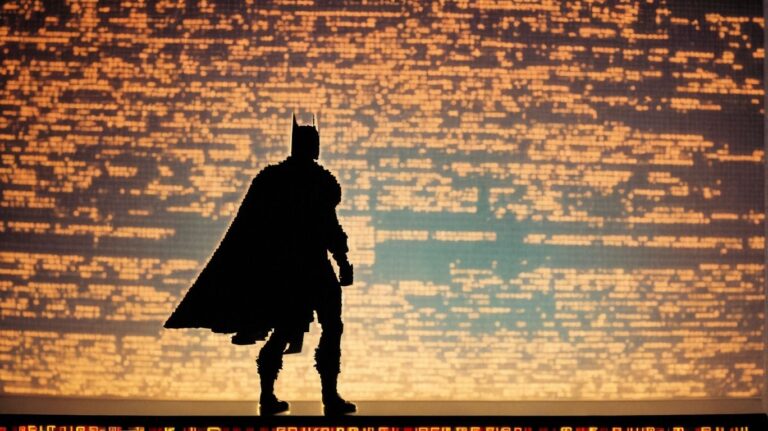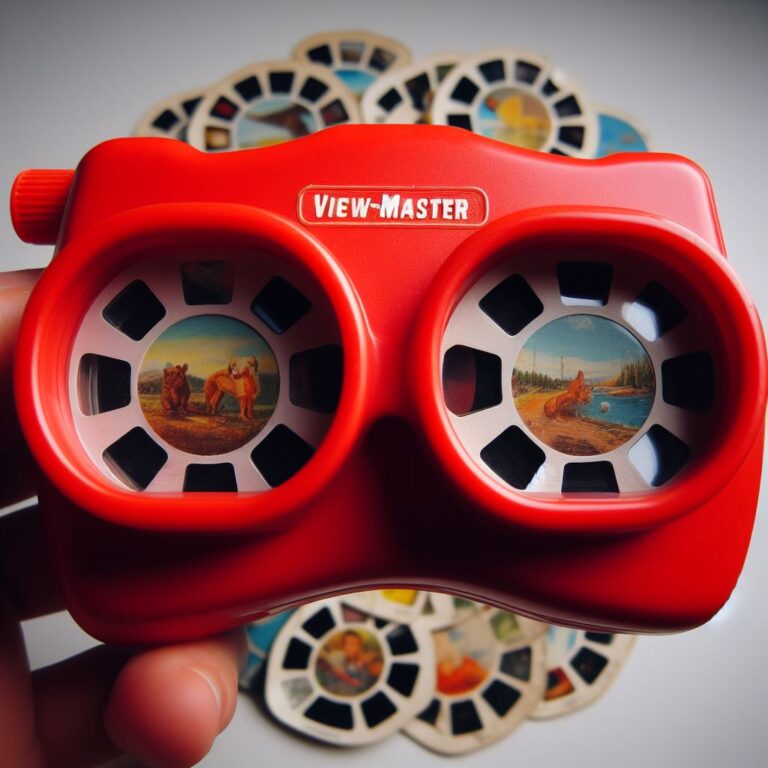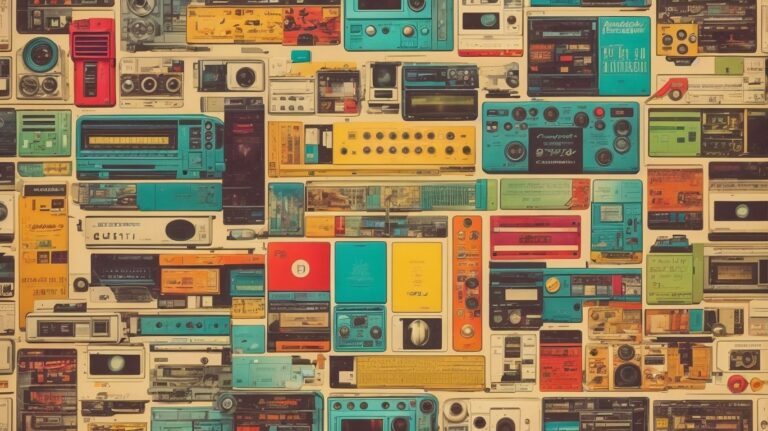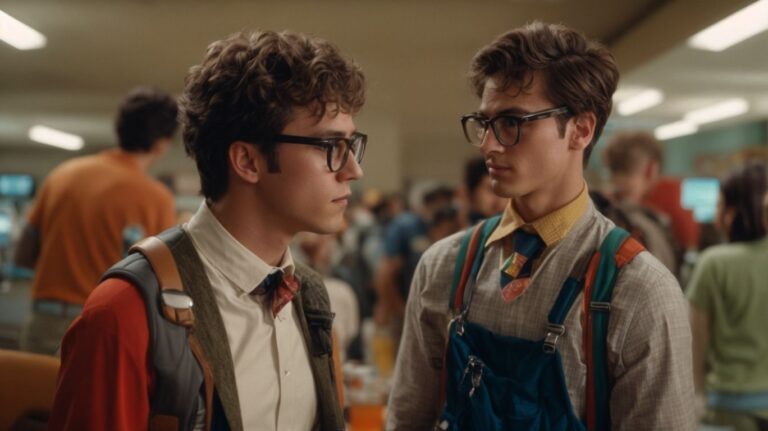The Geek, the Goth, and the Tomboy: Navigating Subcultures in Modern Media
Defining Subcultures
Subcultures provide a way for like-minded individuals to come together in a shared identity. Generally, a subculture is defined as a group of people who come together around a shared idea, way of living, or set of values that differs from the mainstream. This group comes together over what often is an alternative style of dress, music, literature, and activities distinct from other members of their current society.
Members of subcultures often form their own unique language and visual characteristics, reinforcing their group identity. Through online communities and other forms of shared experience, subcultures offer a sense of belonging and acceptance to those feeling out of place in the majority.
History of Geek, Goth, and Tomboy Subcultures
Geeks, Goths, and tomboys have been around for centuries in some form or another. There are references throughout history to intellectuals, dark figures, and strong-willed female characters. Over time, these people were grouped together and recognized for their shared qualities. They formed subcultures of their own, with their own style of dress, language, and attitude. Geek culture, in particular, has seen a huge rise in popularity over the past few decades with the growth of pop culture, bringing with it a mainstream acceptance for geeks and their interests.
Goth culture is also extremely popular. It’s often associated with dark clothing, gothy music and literature, and a fascination with the supernatural and death. Tomboy culture, on the other hand, is less well-defined but typically embraces clothing, femininity, and traditional attributes of femininity but in a way that defies gender roles. It has become increasingly popular as a display of strength and independence in women.
Popular Representations of Subcultures in Modern Media
In the modern world, subcultures are often represented in popular media and culture, from movies, TV shows, and music to advertisements and lifestyle magazines. Representations range from critiques and satires of subcultures to positive portrayals which often aim to build understanding, respect, and awareness for the various diversities of the population. Television shows and films are filled with characters belonging to a wide variety of subcultures, ranging from socially awkward geeks to dark and mysterious goths. These characters often become beloved by fans, as they resonate with viewing audiences who are able to feel a connection with the character’s particular struggles and experiences. These same compelling characters often become box office successes, earning viewers’ admiration and bringing the diverse identities of subcultures into public view. Ultimately, these representations allow us to experience the characteristics of these subcultures without necessarily having to live within them.
The Impact of Subculture Representation on Identity Formation
Participating in a certain subculture or even just being exposed to it can have a big impact on an individual’s identity. Depending on the healthy aspects of the particular scene, a person may take away an increased sense of belonging and confidence. Representations of a certain group in culture can often act as role models and teach people to express themselves without fear of judgement or shame. Outlets such as music, film, and television can provide a safe space for a person to feel comfortable and explore a new side of their identity.
At the same time, it’s important for people to make sure they are not simply adopting the generalizations and unhealthy stereotypes that come with certain subcultures. For example, people identifying with the “goth” culture may feel they need to have a certain look or behavior to belong, when in fact they can express themselves however they want. It’s important to both embrace representation of a certain subculture without being defined by it. This process allows a person to gain the positive aspects of a community without being limited by them.
Exploration of Subculture Appropriation
Subculture appropriation has become an increasingly controversial issue in recent times. It generally refers to the adoption of portions of a culture, most notably by people outside of that culture. This often includes language, clothing, and hairstyle, among other things. This appropriation can create an uncomfortable divide between minority and majority cultures. The minority’s culture is seen as a commodity, something to be used without any significant thought or respect for the marginalized culture or group this is being appropriated from.
The issue of subculture appropriation has been further complicated by the shift of mediums from physical to digital. New methods of connecting around the world on platforms such as social media enable the sharing and exaggeration of minority cultures, adding to the elusiveness of cultural appreciation in our society. Boundaries between cultures have become increasingly harder to define, and the effects of subcultural appropriation can vary greatly by context. As such, it is of the utmost importance for those engaging in live out a culture’s customs with integrity and respect when doing so.
Do Subcultures Still Exist in the Digital Age?
Many have wondered if subcultures still exist in the digital age where information is so readily available and technology has created a connected global community. While certain subcultures have become increasingly popular, many of the original movements and subgroups that once characterized subcultural groups have since dissolved due to changing social pressures.
Subcultures have evolved to become more fluid and transient with the rise of technology, which has allowed members of subcultural groups to easily connect online. It is now much easier to access and share different interests and ideas, as well as to interact with people from different backgrounds and cultures. This wider reach and more expansive visibility has allowed subcultures to continue to exist, but also influences the way that subcultural identities are shaped over time.
Exploring Subculture Crossovers
Crossovers between subcultures are becoming increasingly popular in today’s society. Subculture boundaries no longer have a one-dimensional barrier and as a result, individuals are free to create their own unique style. With fashion, music, and art being increasingly accessible, it’s easier and more popular than ever for subcultures to merge together. For instance, emo and goth subculture crossovers often contain elements of both styles, and the fashion may even blend the two together for an edgy look. Music also serves as an important outlet in this mix of styles, as a number of bands can be classified as belonging to multiple subcultures. This overlapping of styles has allowed for a more diverse cultural scene, and individuals are able to express themselves in multiple ways.
The Pros and Cons of Stereotyping Subcultures
Stereotyping a subculture can potentially be beneficial in its simplification of complex notions that may be difficult to understand without such a system of classification. For example, teenagers often face the temptation of peer pressure and it can be useful to have a classification system that gives an idea of how one should fellowship within a certain sphere of influence. However, this system can also have negative effects, as it reduces the individual and autonomy of the individual by attempting to assign everyone a certain type of identity. Stereotyping can also lead to intolerance of those who differ from conventional norms, which can be especially difficult to overcome in a closed-off environment such as a school system. This can lead to a sense of alienation and frustration in those who wish to express themselves outside of mainstream culture.
How Subculture Representations Can Impact Interpersonal Relationships
When someone identifies with a certain subculture or group, it can have a significant impact on their relationships with others. They may find they build stronger connections with people who share a commonality with them, such as values, beliefs, or interests. On the other hand, those who identify with a particular subculture may also find it difficult to form relationships with people who do not share the same experiences or values. People who identify with subcultures may find it difficult to fit into mainstream society, and this can lead to feelings of alienation, loneliness, and exclusion.
These issues can manifest in a variety of ways, ranging from mild discomfort to full-blown social anxiety. People who identify with a subculture also risk being stereotyped and judged based on their beliefs, values, or interests. This could lead to feelings of distrust or fear of those who do not share the same viewpoints. Additionally, people within a subculture may be viewed as being different from the status quo and could be ostracized, stereotyped, or judged as a result. Subcultures can be seen as a form of protection from this type of oppression, but it can also create an “us versus them” mentality between those inside and outside the subculture.
The Role of Social Media and Internet Culture in Subcultures
The internet and social media have had a huge impact on how subcultures function and are perceived. Anonymity online has allowed people to explore and express their interests more openly, creating an environment where people from similar backgrounds and interests can connect. This has expanded subcultures to encompass people from all around the world, creating unique global communities. People are also able to explore different subcultures and adopt certain aspects which appeals to them – something that was not as widely available in the pre-digital era.
Social media has also had an effect on how subcultures are represented in the media. Thanks to platforms like TikTok and Instagram, smaller subcultures now have an outlet to express themselves and share their culture with others. There have also been various attempts to co-opt and commercialize certain aspects of subcultures for the sake of selling products, while some subcultures have seen a resurgence or popularity due to their promotion on digital platforms. Ultimately, social media and internet culture are playing an ever-increasing role in how subcultures exist and are represented in modern media.
Exploring Subculture Subsets
Within the scope of any given subculture, there may exist different subsets of the sameculture. Subsets look at specific aspects of the larger culture and further distinguish themselves, creating a very specific identity. It is not uncommon to find different styled musical preferences within a single musical subculture. For example, a punk subculture may be made up of different subsets, each of which prefer a certain sound, look, or style. These subsets help create a sense of individual identity, while still partaking in a greater culture.
Additionally, within the same culture, there may be varied motivations for involvement and engagement with the culture. An individual may be interested in developing an individuality, or looking for a sense of belonging. Some may be attracted to the culture purely because of attraction to the aesthetic of a certain lifestyle. These various drivers contribute to the development of subsets within the larger collective. Subcultures within the same parent culture can be seen as antibodies, providing stronger recognition of an individual—which in turn strengthens the collective.
A Look at Subculture Trends Over Time
Subcultures are ever-changing and evolving forces in society, and it can be fascinating to look at the origin of certain subcultures and how they’ve transformed over time. It’s easy to notice certain variations in popular subcultures depending on the current generations. For example, Goth subculture was widely popular during the 1980s and 90s, but it’s seen a shift in mainstream appeal in more recent years with the emphasis on its aesthetics rather than its origins as a dark, alternative lifestyle.
The same could be said for geek culture as well. In the 2000s, the rise of popular comic book and superhero movies has made being a geek something of a status symbol. It’s no longer seen as something strange or taboo, and is now a widely accepted norm in many parts of the world – something that wasn’t seen in the same light decades prior. Thus, it’s clear to see how subcultures are constantly transforming and morphing as the years go by.
What the Future Holds for Subcultures in Media
The future of subcultures in media is something that’s difficult to predict, but it seems likely that change and adaptation to new technologies and platforms will be an important part of their continued relevance. The rapid proliferation of digital media and the rise of shorter content consumption periods have caused media consumption patterns to evolve in recent years. This could lead to more short-form content being created to capitalize on that market, offering interesting windows into popular or obscure subcultures. Additionally, there could be an increase in specific and niche-oriented social networks and platforms that are devoted exclusively to different subcultures, allowing them a more direct platform to share and communicate with one another in a safe and secure environment.
Meanwhile, the technology for virtual and augmented reality continues to improve, and more interactive, immersive experiences will be developed to take advantage of those mediums. In turn, this could lead to a new kind of media consumption experience, with viewers being able to ‘walk around’ an avatar in a virtual space and get a much more in-depth view of what that particular subculture is really like. Despite their differences, all of these changes should further the understanding of and respect for the different subcultures that exist around the world, and hopefully lead to a greater diversity of representation in the media.
- The Dinosaur T-Rex Running Game - 5 November 2023
- Simon Says Remember: The Classic Simon Electronic Game - 5 November 2023
- AppleCare Cancelled? Now What? - 4 November 2023







